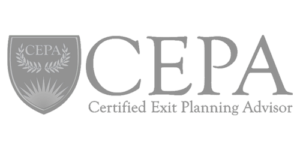Did you know that regulatory changes in the business brokerage industry can have a significant impact on operations? In today's fast-paced and ever-changing regulatory landscape, staying updated on the latest changes is crucial for businesses to remain compliant and successful. Whether you're a seasoned business broker or just starting out, understanding how to prepare for regulatory changes is essential to navigate market challenges and maintain a competitive edge.
Key Takeaways:
- Regulatory changes in the business brokerage industry can have a significant impact on operations.
- Staying updated on the latest regulatory changes is crucial for maintaining compliance and ensuring business success.
- Preparing for regulatory changes involves understanding the impact, developing a compliance planning strategy, and implementing effective change management strategies.
- Continuous monitoring and evaluation of compliance efforts is essential to proactively identify and address potential compliance risks.
- Adapting to legal changes and engaging legal counsel is necessary to stay updated on legal requirements in the industry.
Understanding Regulatory Updates in Business Brokerage
In the business brokerage industry, staying informed about regulatory updates is crucial for maintaining compliance and ensuring smooth operations. Regulatory changes can have a significant impact on business practices, requiring businesses to adapt and make necessary adjustments to meet new legal requirements.
To effectively navigate regulatory updates, businesses must have a comprehensive compliance planning strategy in place. Compliance planning involves proactively identifying potential regulatory changes and developing processes and procedures to address them.
Legal adaptation is another critical aspect of dealing with regulatory updates. This involves understanding the legal implications of the changes and making the necessary adjustments to ensure compliance with industry standards.
By understanding regulatory updates, businesses can stay ahead of the curve and minimize the risk of non-compliance. Regularly monitoring regulatory changes and actively engaging in compliance planning and legal adaptation can help businesses maintain their competitive edge and protect their reputation.
Next, we will explore the process of assessing the impact of regulatory changes on business brokerage operations and developing effective compliance planning strategies.
Assessing the Impact of Regulatory Changes on Business Brokerage
When regulatory changes occur in the business brokerage industry, it is crucial for professionals to assess their impact on their operations. By evaluating the potential effects of these changes, businesses can identify areas that require adjustments or updates to ensure compliance and maintain a competitive edge.
To assess the impact of regulatory changes, consider the following steps:
- Evaluate the changes: Carefully review the new regulations and understand how they differ from previous requirements. Identify the specific areas of your brokerage operations that will be affected.
- Analyze potential challenges: Assess the challenges that may arise from the regulatory changes. Determine the extent to which these changes may disrupt your current processes, compliance protocols, or business strategies.
- Conduct a gap analysis: Compare your existing practices with the new regulatory requirements to identify any gaps or areas of non-compliance. This analysis will help you prioritize the necessary adjustments.
- Consider resource allocation: Determine the resources, including time, personnel, and financial investments, needed to implement the changes effectively. Assess potential risks and allocate resources accordingly.
- Engage external expertise (if necessary): If the regulatory changes are complex or outside your area of expertise, consider engaging legal counsel or regulatory consultants to guide you through the compliance planning process.
By following these steps, businesses in the brokerage industry can proactively assess the impact of regulatory changes, ensure compliance, and minimize disruptions to their operations.
| Steps to Assess the Impact of Regulatory Changes |
|---|
| 1. Evaluate the changes |
| 2. Analyze potential challenges |
| 3. Conduct a gap analysis |
| 4. Consider resource allocation |
| 5. Engage external expertise (if necessary) |
By following these steps and taking a proactive approach to assessing the impact of regulatory changes, business brokerages can stay compliant and adapt to new industry standards effectively.
Developing a Compliance Planning Strategy
When it comes to navigating regulatory changes, having a well-defined compliance planning strategy is crucial for business brokerage firms. By proactively anticipating and adapting to regulatory updates, firms can ensure a smooth transition while mitigating compliance risks.
Here are the key steps to developing a comprehensive compliance planning strategy:
- Stay Informed: Stay updated on regulatory changes that may impact the business brokerage industry. Regularly monitor industry news, attend relevant seminars and conferences, and maintain open lines of communication with industry regulatory bodies.
- Evaluate Impact: Assess the potential impact of regulatory changes on your business brokerage operations. Identify areas that will require adjustments or updates to ensure compliance and avoid any potential penalties or legal consequences.
- Identify Compliance Measures: Identify the specific compliance measures that need to be implemented to adhere to the new regulations. This may include changes to documentation processes, training programs, and communication channels within the organization.
- Create a Roadmap: Develop a roadmap that outlines the timeline and implementation strategy for compliance measures. Assign responsibilities to appropriate team members and establish clear milestones to track progress.
- Training and Education: Provide comprehensive training programs to educate employees on the regulatory changes and the new compliance measures. This will ensure that everyone understands their roles and responsibilities and can effectively implement the changes.
- Document and Communicate: Keep detailed documentation of compliance efforts, including policies, guidelines, and procedures. Establish clear communication channels to ensure that all stakeholders are aware of the changes and understand their implications.
By following these steps, business brokerage firms can develop a robust compliance planning strategy to effectively navigate regulatory changes. Adhering to industry standards and proactively managing compliance not only reduces the risk of non-compliance but also enhances the reputation and trustworthiness of the firm.
| Benefits of Developing a Compliance Planning Strategy: | Impact on Business Brokerage: |
|---|---|
| Ensures adherence to regulatory requirements | Minimizes the risk of penalties and legal consequences |
| Reduces compliance-related disruptions to business operations | Enhances the firm's reputation and client trust |
| Facilitates smooth implementation of regulatory changes | Supports proactive risk management |
| Enables effective communication and training for employees | Streamlines compliance processes and procedures |
Adapting to Legal Changes in Business Brokerage
In the fast-paced business brokerage industry, staying updated on legal changes is crucial for maintaining compliance and ensuring the smooth operation of your business. Adapting to these changes requires a proactive approach and careful integration of legal requirements into your day-to-day operations. Here are some practical tips to help you navigate the ever-changing legal landscape:
- Engage legal counsel: Working closely with experienced legal professionals who specialize in business brokerage can provide invaluable guidance and support. They can help you understand the implications of legal changes and assist in implementing effective compliance strategies.
- Stay informed: Regularly monitor industry publications, regulatory websites, and professional associations to keep yourself up-to-date on legal developments. Sign up for newsletters or alerts that provide timely information on regulatory changes.
- Establish internal processes: Develop internal processes and systems to ensure compliance with legal requirements. This may include conducting regular audits, maintaining documentation, and implementing training programs to educate your staff on new regulations.
- Integrate legal adaptation: Embed legal adaptation into your day-to-day operations by incorporating compliance considerations into your business practices. This includes updating contracts, policies, and procedures to align with legal requirements.
- Seek industry insights: Attend conferences, seminars, or industry events where you can exchange ideas and gain insights from other business brokerage professionals. Networking with peers can help you identify best practices for adapting to legal changes.
- Develop a compliance culture: Foster a culture of compliance within your organization by emphasizing the importance of adhering to legal requirements. Promote open communication channels where employees can raise concerns or seek clarification on compliance-related matters.
By proactively adapting to legal changes, you can protect your business from potential risks, demonstrate your commitment to compliance, and ensure the long-term success of your business brokerage firm.
Implementing Effective Change Management Strategies
When facing regulatory changes, implementing effective change management strategies is crucial for ensuring a smooth transition and maintaining compliance with new requirements. By following best practices for change management, businesses can navigate the challenges posed by regulatory changes and position themselves for long-term success.
Communication
Clear and timely communication is key when implementing changes in response to regulatory mandates. This involves keeping all stakeholders informed about the new requirements, the reasons for the changes, and the expected impact on business operations. By providing regular updates and fostering open dialogue, businesses can address any concerns, gain buy-in from employees, and create a sense of shared purpose.
Training and Education
To ensure successful compliance with regulatory changes, comprehensive training and education programs should be implemented. This involves equipping employees with the necessary knowledge and skills to navigate the new requirements. Training sessions, workshops, and online courses can help employees understand the implications of the changes and empower them to adapt their workflows accordingly.
Managing Resistance to Change
Resistance to change is a natural human response, and it is important for businesses to proactively address it. By creating a supportive and inclusive environment, organizations can help employees overcome resistance and embrace the necessary changes. This can be achieved through transparent communication, involving employees in decision-making processes, and providing ongoing support and feedback.
Monitoring and Evaluation
Regularly monitoring and evaluating the progress of change management efforts is vital for ensuring their effectiveness. This involves tracking key performance indicators (KPIs), conducting audits, and soliciting feedback from employees and stakeholders. By measuring the impact of the implemented changes, businesses can identify areas for improvement and make adjustments accordingly.
Key Strategies for Change Management
| Strategy | Description |
|---|---|
| Clear Communication | Ensure all stakeholders are informed, addressing concerns and fostering dialogue. |
| Comprehensive Training | Equip employees with the necessary knowledge and skills to adapt to regulatory changes. |
| Managing Resistance | Create a supportive environment to address resistance and promote employee buy-in. |
| Monitoring and Evaluation | Regularly measure progress and solicit feedback to ensure effective change management. |
By implementing these strategies, businesses can navigate regulatory changes with confidence, ensuring compliance and positioning themselves for continued success in the dynamic business brokerage industry.
Continuous Monitoring and Evaluation of Compliance
As regulatory changes continue to shape the business brokerage industry, it is crucial for firms to establish robust systems and processes for continuous monitoring and evaluation of compliance. This proactive approach ensures ongoing adherence to industry standards and provides the necessary agility to address potential compliance risks before they escalate.
Benefits of Continuous Monitoring and Evaluation
By implementing a comprehensive compliance planning strategy that includes continuous monitoring and evaluation, business brokers can:
- Stay up-to-date with evolving regulatory changes and industry standards.
- Identify and address compliance gaps or areas of improvement promptly.
- Proactively mitigate potential compliance risks and avoid costly penalties.
- Elevate their reputation as trustworthy and compliant professionals.
Establishing an Effective Monitoring and Evaluation System
To ensure continuous compliance, business brokerage firms should:
- Designate a Compliance Officer: Appoint an individual or team responsible for overseeing compliance processes and staying informed about regulatory changes.
- Create Clear Compliance Policies and Procedures: Develop and communicate comprehensive policies and procedures that align with industry standards and regulatory requirements.
- Implement Regular Compliance Audits: Conduct periodic audits to assess compliance effectiveness and identify any areas for improvement.
- Stay Informed: Continuously monitor regulatory changes and industry developments to ensure compliance efforts are aligned with the latest requirements.
- Provide Ongoing Training: Train employees on compliance policies and procedures to maintain awareness and adherence.
- Maintain Detailed Documentation: Keep accurate records of compliance activities, audits, and any corrective actions taken.
Continuous Monitoring and Evaluation in Practice
| Monitoring and Evaluation Components | Description |
|---|---|
| Compliance Assessments | Regular assessments to evaluate compliance with regulatory changes and industry standards. |
| Internal Audits | Periodic audits conducted by the Compliance Officer or designated team to identify potential gaps and areas for improvement. |
| Reputation Monitoring | Monitoring online platforms, industry associations, and regulatory bodies for any changes or updates that may impact compliance. |
| Incident Reporting | Establishing a clear process for reporting compliance incidents or potential breaches to enable prompt investigation and resolution. |
| Training and Education | Ongoing training programs to keep employees informed about current regulatory changes and compliance responsibilities. |
| Record Keeping | Maintaining accurate and complete documentation of compliance activities, audits, and employee training records. |
Implementing a robust system for continuous monitoring and evaluation of compliance ensures that business brokers are well-prepared to navigate regulatory changes, maintain industry standards, and mitigate compliance risks. By embracing this proactive approach, firms can safeguard their reputation, build client confidence, and thrive amidst an ever-evolving regulatory environment.
Conclusion
In today's rapidly evolving business brokerage landscape, staying ahead of regulatory changes is essential for maintaining compliance and ensuring the success of your business. From understanding the impact of regulatory updates to developing a comprehensive compliance planning strategy, these steps can help you navigate the ever-changing regulatory landscape.
By assessing the potential impact of regulatory changes on your operations and adapting to legal requirements, you can mitigate risks and maintain your competitive edge. Implementing effective change management strategies, such as clear communication and training programs, will ensure a smooth transition for your team.
However, compliance planning doesn't stop at the implementation stage. Continuous monitoring and evaluation of your compliance efforts are crucial to identify potential risks and proactively address them. By staying vigilant and proactive, you can safeguard your business brokerage and uphold industry standards.
In summary, regulatory changes are an inevitable part of the business brokerage industry. By embracing compliance planning as a proactive strategy, you can position your business for success and demonstrate your commitment to ethical and professional practices. Stay informed, adapt, and always prioritize compliance.










